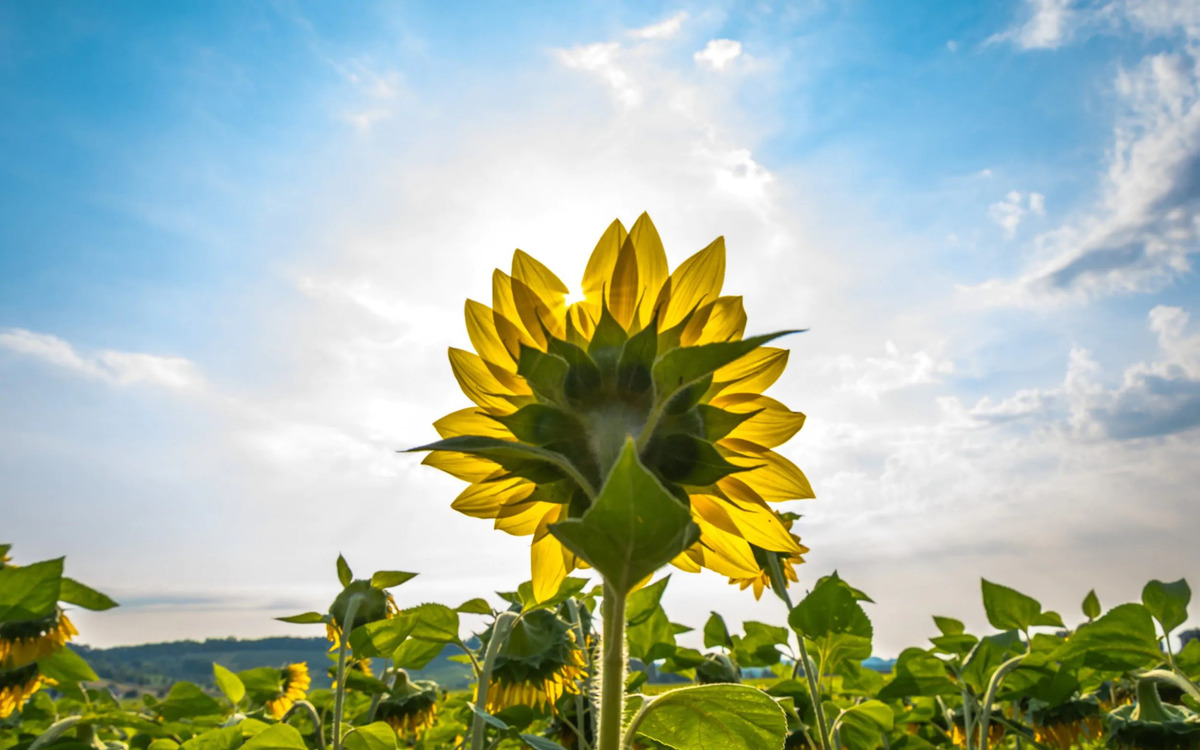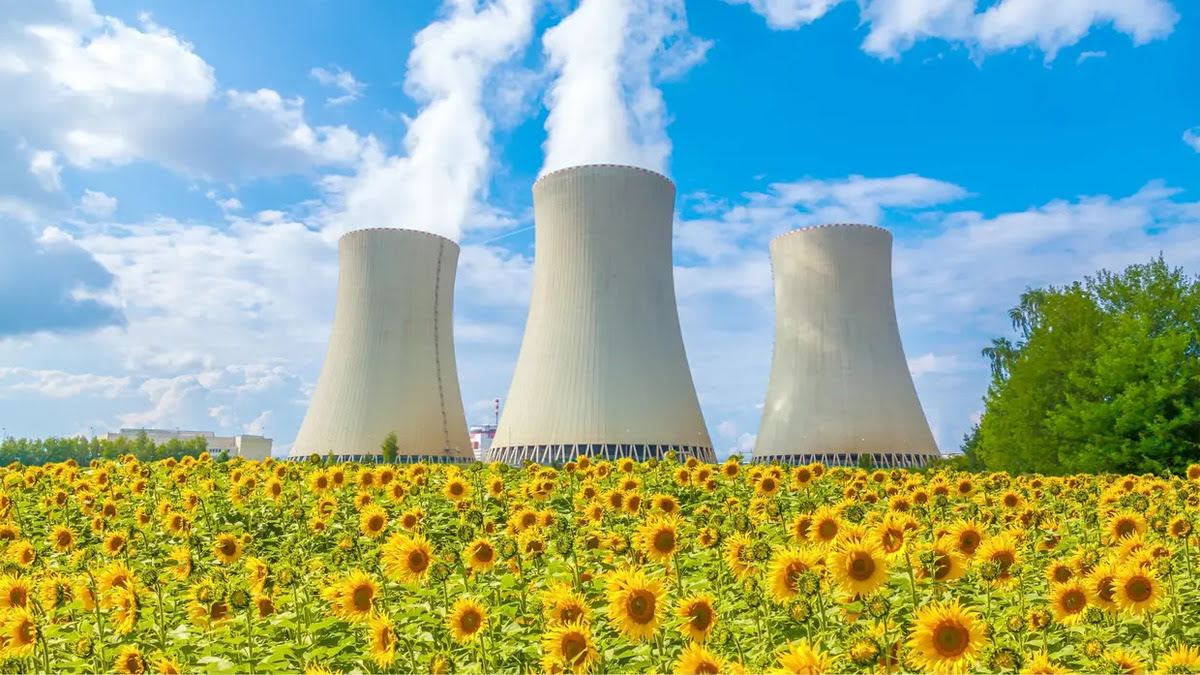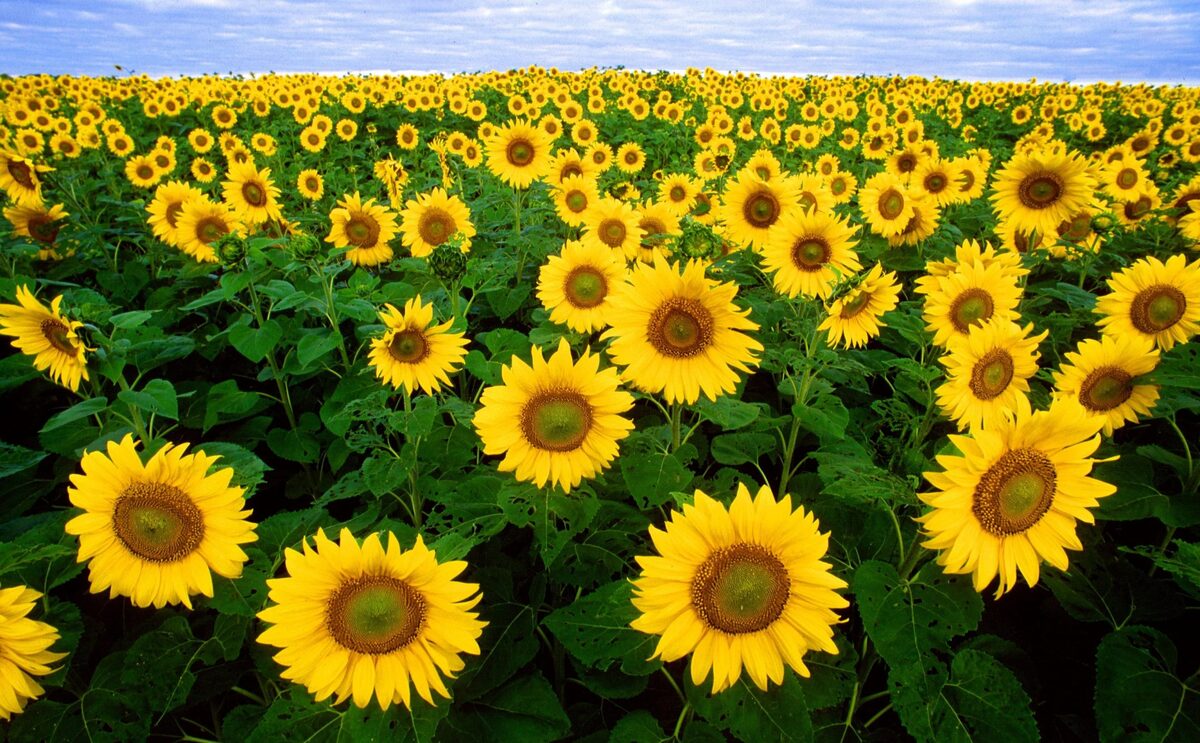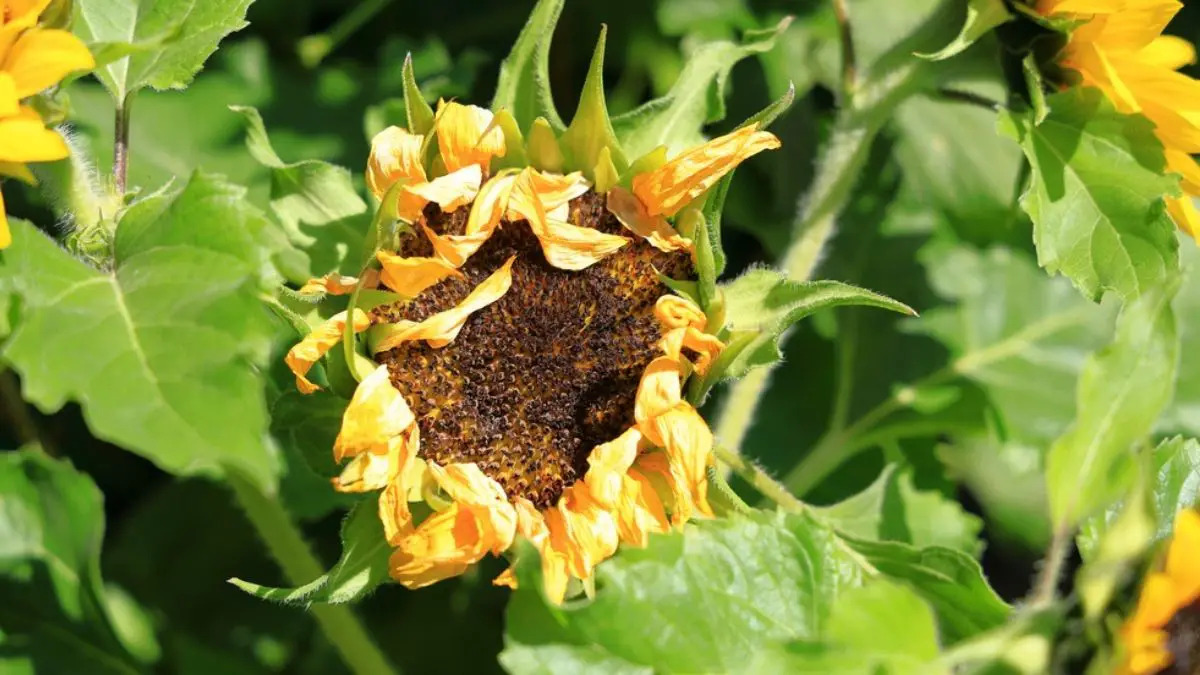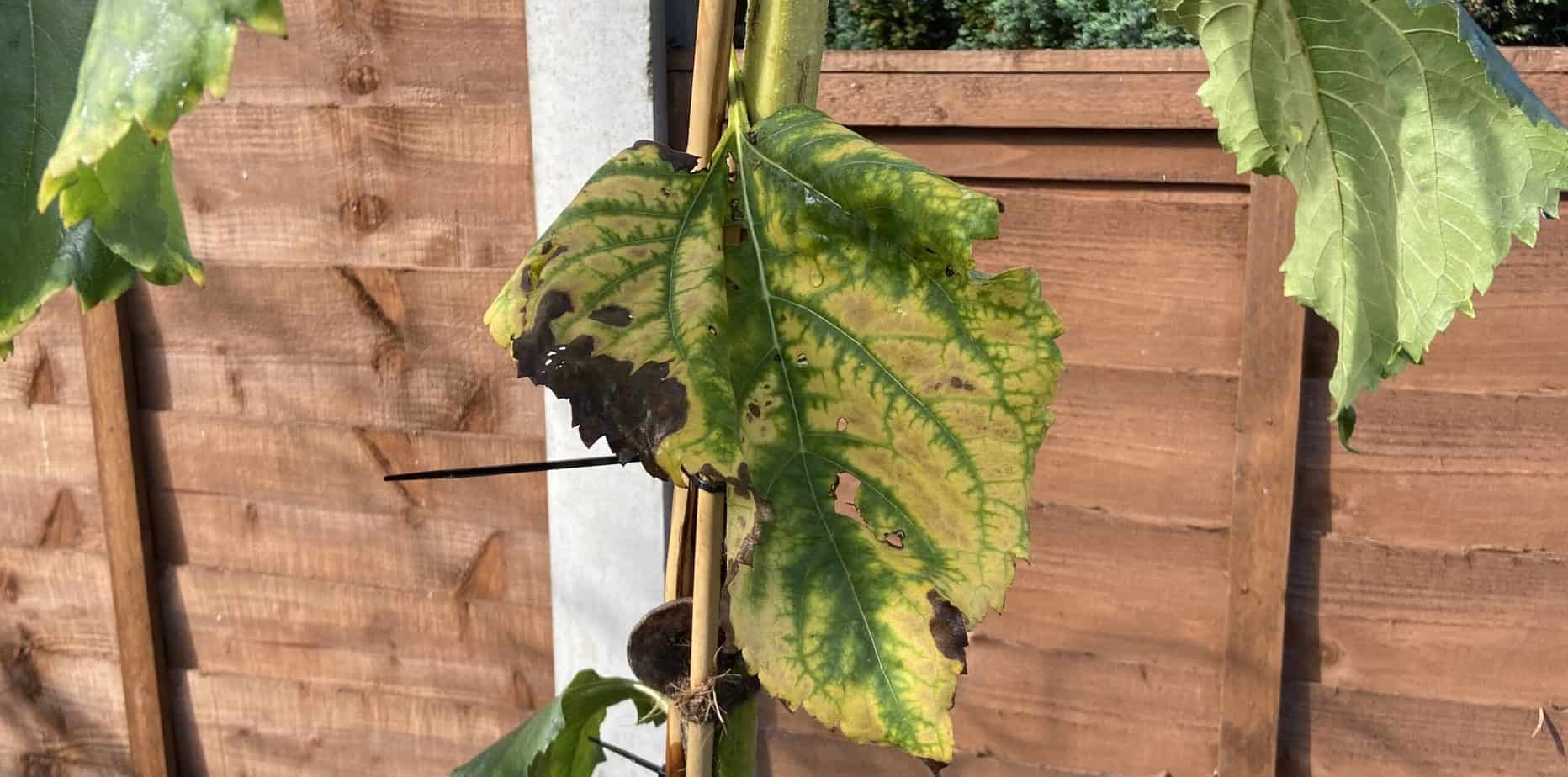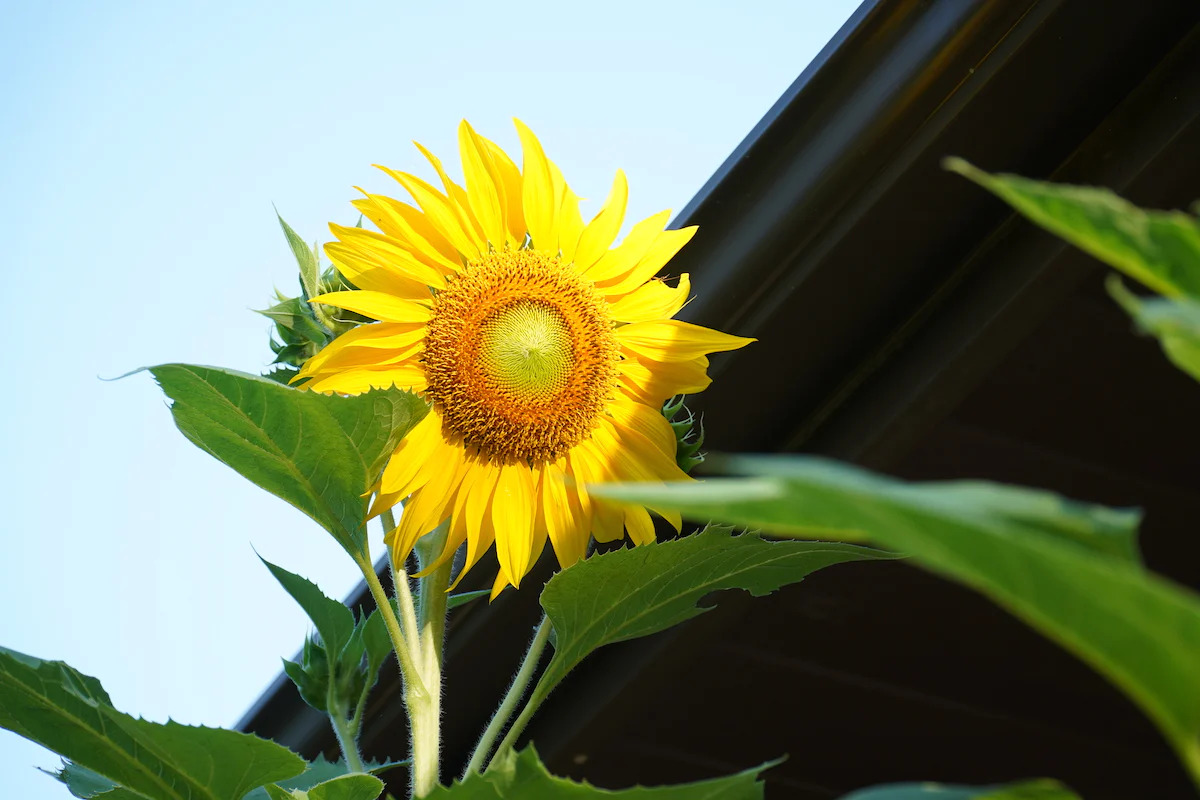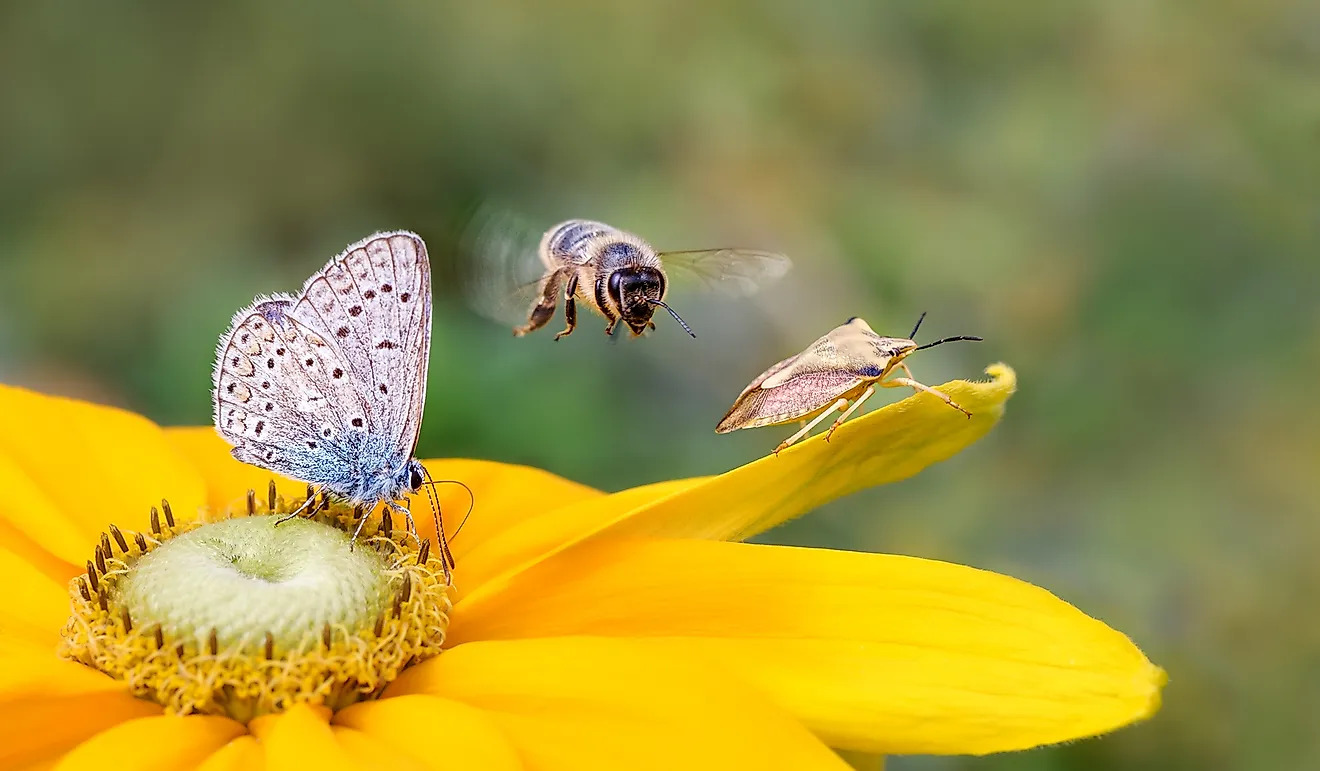Home>Types of Gardening>Ornamental Gardening>Why Are They Called Sunflowers


Ornamental Gardening
Why Are They Called Sunflowers
Modified: January 22, 2024
Learn about the intriguing name behind sunflowers and uncover their role in ornamental gardening. Discover the beauty and benefits of these vibrant plants for your garden.
(Many of the links in this article redirect to a specific reviewed product. Your purchase of these products through affiliate links helps to generate commission for Chicagolandgardening.com, at no extra cost. Learn more)
Table of Contents
Introduction
Sunflowers are one of the most popular and recognizable flowers in the world. With their vibrant yellow petals and towering height, these striking plants have captured the hearts of gardeners and flower enthusiasts for centuries. Not only are sunflowers visually stunning, but they also have a rich history, fascinating characteristics, and a variety of uses. In this article, we will delve into the world of sunflowers and explore their origins, symbolism, cultivation techniques, and interesting facts.
For many cultures throughout history, sunflowers have held a special significance. The indigenous Native Americans revered the plant for its practical uses, such as food and medicine, as well as its spiritual symbolism. Sunflowers were believed to represent the sun god and were often used in ceremonies and rituals. Europeans became acquainted with sunflowers in the 16th century when Spanish explorers brought them back from the Americas. From then on, sunflowers quickly gained popularity, not only for their beauty but also for their practical applications.
Sunflowers, scientifically known as Helianthus annuus, belong to the Asteraceae family. These flowering plants are native to North and Central America and have been cultivated for thousands of years. They are renowned for their ability to track the sun, a phenomenon known as heliotropism. Sunflower heads can turn and face the sun as it moves across the sky, maximizing their exposure to sunlight and aiding in their growth process.
Sunflowers have distinct characteristics that set them apart from other plants. They are tall and can reach heights of 10 feet or more, with sturdy stems that support their enormous flower heads. The flowers themselves consist of a circular arrangement of golden-yellow petals surrounding a prominent brown center, known as the disc florets. As the petals wilt and fall off, the sunflower’s unmistakable seed-filled disc remains, providing a nutritious treat for birds and small animals.
Throughout history, sunflowers have been associated with various symbolic meanings. They are often viewed as a symbol of positivity, happiness, and loyalty. Sunflowers represent the sun and are seen as a source of light and warmth in many cultures. Their bright and cheerful appearance has made them a popular choice for gifts, especially during times of celebration and joy. Sunflowers are also seen as a symbol of longevity and resilience, as they can withstand challenging growing conditions and thrive in different climates.
In the next sections of this article, we will explore the cultivation techniques of sunflowers, their uses in the gardening world and beyond, as well as some interesting facts and trivia about these fascinating flowers.
History of Sunflowers
The history of sunflowers dates back thousands of years and is intertwined with the cultures and civilizations that have cultivated them. Native to North and Central America, sunflowers were one of the first crops to be domesticated by indigenous peoples. Evidence of early sunflower cultivation can be traced back to around 3000 BCE in what is now modern-day Mexico and the southwestern United States.
The indigenous peoples of North America, including the Aztecs and the Incas, held sunflowers in high regard. They recognized the incredible versatility of this plant, utilizing it for food, oil, dye, and medicine. Sunflower seeds were an essential part of the Native American diet, providing a rich source of nutrients and a reliable source of food during harsh winters. The seeds were ground into flour, used to make bread, and even pressed to extract oil for cooking and skincare purposes.
When Spanish explorers arrived in the Americas in the 16th century, they encountered sunflowers for the first time. They were captivated by the beauty and usefulness of these plants and brought sunflower seeds back to Europe. Sunflowers quickly gained popularity throughout the continent, becoming a cherished ornamental plant in gardens across various countries.
During the 18th century, Russian farmers began extensive cultivation of sunflowers for oil production. This marked the beginning of large-scale sunflower agriculture, and Russia soon became a major producer and exporter of sunflower oil. The crop’s adaptability to different climates and soils contributed to its widespread cultivation around the world.
In the late 19th century, Russian immigrants brought sunflower seeds to North America, where the plant thrived in the Central Plains region. These areas, particularly Kansas, Nebraska, and South Dakota, provided the perfect conditions for sunflowers to grow, resulting in the United States becoming one of the largest producers of sunflower seeds and oil worldwide.
Today, sunflowers continue to be cultivated globally for their beauty, culinary uses, and industrial applications. The sunflower industry plays a significant role in countries such as Russia, Ukraine, Argentina, and the United States, where sunflower seeds and oil are important commodities.
The rich history of sunflowers is a testament to their enduring popularity and usefulness. From their humble beginnings as a staple food source for Native Americans to their journey across continents and their impact on various cultures, sunflowers have become a beloved symbol of warmth, positivity, and natural beauty.
Characteristics of Sunflowers
Sunflowers, scientifically known as Helianthus annuus, possess a unique set of characteristics that make them easily recognizable and beloved by gardeners and nature enthusiasts alike. From their towering height to their vibrant appearance, here are some key features of sunflowers:
- Tall Stature: Sunflowers are known for their impressive height, with some varieties reaching up to 10 feet or more. Their elongated stems provide stability for the plant, allowing it to support the weight of the large flower heads.
- Bright and Large Flower Heads: One of the most striking characteristics of sunflowers is their vibrant flower heads. Composed of multiple layers of overlapping petals, sunflowers typically have a circular arrangement of golden-yellow petals surrounding a prominent brown disc florets. The flower heads can measure up to 12 inches in diameter.
- Heliotropism: Sunflowers are known for their unique ability to track the movement of the sun. This phenomenon, called heliotropism, occurs during the early stages of growth and development. As the sun moves across the sky during the day, young sunflower buds and flower heads will face east in the morning and gradually turn to face west by evening, optimizing their exposure to sunlight.
- Edible Seeds: Sunflower seeds, found within the flower heads, are a popular snack and culinary ingredient. They are rich in healthy fats, protein, and various nutrients. Sunflower seeds can be enjoyed raw, roasted, salted, or used as a topping in salads, bread, granola, and other dishes.
- Adaptability: Sunflowers are highly adaptable plants that can thrive in a wide range of climates and soil conditions. While they prefer full sun and well-drained soil, they can tolerate moderate drought and some variations in soil quality.
- Fast Growth: Sunflowers are fast-growing plants, with some varieties capable of reaching their full height in just a few months. This rapid growth makes them an excellent choice for gardeners looking for quick results and visual impact.
- Attracts Wildlife: Sunflowers are not only visually appealing but also attract a range of wildlife to the garden. Bees, butterflies, and other pollinators are drawn to the bright flowers, contributing to the overall health of the ecosystem. Sunflower heads, with their abundant seeds, also provide a valuable food source for birds and small animals.
These characteristics contribute to the charm and appeal of sunflowers, making them a popular choice for both ornamental gardens and agricultural purposes. Whether admired for their beauty, enjoyed as a snack, or appreciated for their ecological role, sunflowers continue to captivate and inspire.
Symbolism of Sunflowers
Sunflowers have long been associated with symbolism and have held various meanings across different cultures and time periods. Their vibrant appearance and unique characteristics have made them powerful symbols of positivity, happiness, and growth. Here are some of the symbolic meanings attributed to sunflowers:
- Adoration and Joy: The sunflower’s bright and cheerful appearance has commonly been associated with adoration and joy. They are often seen as a symbol of happiness and positivity, evoking feelings of warmth and delight. Gift-giving involving sunflowers is a way to express admiration, appreciation, and delight in someone’s presence.
- Warmth and Vitality: Sunflowers are often seen as a representation of the sun itself. As the sun provides light, warmth, and life to the world, sunflowers symbolize vitality, energy, and a zest for life. Their radiant yellow petals and the way they turn towards the sun exemplify the qualities of warmth and positivity.
- Loyalty and Longevity: Sunflowers also symbolize loyalty and longevity. Their strong stalks and long-lasting blooms reflect enduring qualities, like loyalty and faithful devotion. Sunflower seeds, which can be harvested and replanted year after year, are a testament to the plant’s ability to sustain itself and bloom continuously.
- Optimism and Hope: Sunflowers have been associated with optimism and hope. Their uplifting appearance can inspire a positive outlook and a hopeful mindset. Sunflowers remind us to focus on the bright side of life and to seek opportunities for growth and happiness, even in challenging times.
- Close Ties to Nature: Sunflowers symbolize a strong bond with the natural world. Their ability to track the sun’s movement demonstrates the plant’s connection to the rhythms of nature. They serve as a reminder of our interconnectedness with the environment and the importance of appreciating and caring for the natural world around us.
It is important to note that the symbolic meanings associated with sunflowers can vary across different cultures and personal interpretations. They can hold personal significance, representing individual experiences and emotions. Whether given as a gift or included in decorative arrangements, sunflowers can convey messages of joy, hope, and admiration.
The symbolism of sunflowers is not limited to their appearance but extends to their cultivation and uses as well. As sunflowers have the ability to thrive in different climates and their seeds provide nourishment, they can also represent resilience, adaptability, and sustenance.
Cultivation and Uses of Sunflowers
Cultivating sunflowers can be a rewarding and enjoyable experience for gardeners of all levels of expertise. Sunflowers are relatively easy to grow and have a wide range of uses, both in the garden and beyond. Let’s explore the cultivation techniques and various uses of sunflowers:
Cultivation: Sunflowers thrive in full sun and well-drained soil. They are usually sown directly outdoors after the last frost date in your region. The seeds can be planted about 1-2 inches deep and spaced 6-12 inches apart, depending on the variety. Water regularly but avoid overwatering, as excess moisture can lead to root rot. As they grow, taller varieties may require staking or support to prevent toppling over in strong winds. With proper care and maintenance, sunflowers will typically bloom within 70-100 days.
Ornamental Use: Sunflowers are loved for their stunning blooms and are commonly grown for decorative purposes. They can add a pop of vibrant color and height to garden beds, borders, and containers. The large flower heads make beautiful cut flowers, bringing a touch of sunshine indoors. Sunflowers also attract beneficial insects like bees and butterflies, enhancing the biodiversity of your garden.
Edible Uses: Sunflower seeds are a versatile ingredient with various culinary uses. The seeds can be enjoyed roasted and salted as a delicious and nutritious snack. They are also commonly used in baking, as toppings for salads or granola, and as an ingredient in bread, muffins, and other baked goods. Sunflower oil, extracted from the seeds, is widely used in cooking and as a healthy alternative to other cooking oils.
Bird Feeders and Wildlife Habitat: Sunflower heads, with their abundant seeds, can be left in the garden as a natural bird feeder. They provide a valuable food source for birds, particularly during the colder months when other food may be scarce. Sunflowers also attract a variety of wildlife, including squirrels and small mammals, creating a wildlife-friendly habitat in your garden.
Industrial Uses: Sunflower seeds have industrial applications as well. They are a primary source of high-quality vegetable oil, commonly used in food manufacturing, cosmetics, and skincare products. The oil can also be used as a biofuel, providing a renewable energy alternative. Additionally, sunflower crops can be cultivated for phytoremediation, a process that uses plants to decontaminate polluted soil and water.
Symbolic Uses: Sunflowers hold symbolic meanings and are often used in celebrations, events, and decorations. They are commonly used in weddings, representing happiness, love, and fertility. Sunflowers can also be gifted to convey positive emotions and convey messages of joy, appreciation, and support.
Overall, sunflowers offer a wide range of uses, from their ornamental beauty to their culinary and industrial applications. Whether you plant them for their charming appearance, their delicious seeds, or their positive symbolism, sunflowers are a versatile and delightful addition to any garden.
Varieties of Sunflowers
Sunflowers come in a wide array of varieties, each with its own unique characteristics, size, and color. Whether you prefer compact varieties for containers or towering giants for your garden, there is a sunflower variety to suit every gardener’s taste. Here are some popular varieties of sunflowers:
Giant Sunflowers: As the name suggests, giant sunflowers are known for their impressive height and colossal flower heads. These towering varieties can reach heights of 10 feet or more, with flower heads measuring 12 inches or larger in diameter. They make a dramatic statement in the garden and are a favorite for creating eye-catching focal points.
Dwarf Sunflowers: On the opposite end of the size spectrum, dwarf sunflowers are perfect for small gardens or container plantings. These compact varieties typically grow to be around 1-3 feet tall, making them ideal for patio gardens or as border plants. Despite their smaller stature, dwarf sunflowers still produce beautiful blooms and are available in a variety of colors.
Teddy Bear Sunflowers: Teddy bear sunflowers are a popular variety known for their unique appearance. They have compact, fully double flower heads that resemble fluffy, golden-yellow pom-poms. Teddy bear sunflowers are often chosen for their ornamental value and are commonly used in floral arrangements and as cut flowers.
Autumn Beauty Sunflowers: As the name suggests, autumn beauty sunflowers showcase a stunning range of warm colors that evoke the beauty of autumn. These multi-branched varieties produce numerous flower heads in shades of yellow, orange, and red, creating a vibrant and captivating display. Autumn beauty sunflowers are a favorite among gardeners who wish to add a touch of autumnal charm to their garden.
Velvet Queen Sunflowers: Velvet queen sunflowers are distinctive for their rich, velvety, mahogany-red petals. These striking flowers create a bold contrast against their dark center discs, making for a truly eye-catching display. Velvet queen sunflowers stand out in any garden or floral arrangement and add a touch of drama and elegance.
Lemon Queen Sunflowers: Lemon queen sunflowers are prized for their soft, lemon-yellow petals, which exude a serene and delicate charm. These sunflowers have a slightly shorter height, usually reaching around 5-6 feet, and are often grown for their edible seeds. Lemon queen sunflowers are a great option for those seeking a more subtle and mellow sunflower variety.
Ring of Fire Sunflowers: Ring of fire sunflowers offer a mesmerizing display of vibrant colors. These unique sunflowers feature reddish-orange petals with striking yellow tips, creating a captivating “ring of fire” effect around the center disc. They are certain to make a bold statement and become a focal point in any garden.
These are just a few examples of the countless sunflower varieties available to gardeners. From giants to dwarfs, and from velvety mahogany to lemony hues, each variety brings its own charm and appeal. Whether you choose a classic variety or opt for something more unusual, sunflowers are sure to add beauty and joy to your garden.
Fun Facts about Sunflowers
Sunflowers are not only beautiful and versatile plants but also fascinating in their own right. Here are some fun and interesting facts about sunflowers:
- Record-Breaking Heights: Sunflowers are known for their impressive height, with some varieties reaching over 30 feet tall! The tallest sunflower ever recorded stood at a jaw-dropping height of 30 feet and 1 inch, grown in Germany in 2014.
- Multiple Flowers on One Plant: While most sunflowers typically produce a single flower per stem, some varieties can surprise you with multiple blooms. Some multi-branching sunflower varieties can produce numerous flower heads on a single plant, creating an abundant and striking display.
- Seed Formation: Sunflowers are known for their large and seed-filled flower heads. Each flower head can contain hundreds or even thousands of individual seeds. The seeds develop on the disc florets, which are arranged in a distinct spiral pattern.
- Phytoremediation Abilities: Sunflowers have a remarkable ability to absorb toxins and pollutants from the soil and water in a process called phytoremediation. Their deep root system and efficient uptake of contaminants make them valuable in cleaning up soil contaminated with heavy metals and radioactive materials.
- Sunflower-Based Art: Sunflowers have been a popular subject in art throughout history. The iconic Sunflowers series by Vincent van Gogh is one of the most famous examples, capturing the beauty and essence of these glorious flowers. Sunflowers have also been depicted in various forms of art, including paintings, sculptures, and decorative motifs.
- World Sunflower Day: International Sunflower Guerrilla Gardening Day, also known as World Sunflower Day, is celebrated on May 1st each year. This day encourages people to sow sunflower seeds in public spaces to bring beauty and joy to their communities.
- Global Sunflower Production: Sunflowers are cultivated worldwide, with the top producers including Russia, Ukraine, Argentina, and the United States. These countries grow sunflowers for various purposes, including oil production, birdseed, and confectionery uses.
- Edible Sunflower Varieties: Not all sunflower varieties are grown for their seeds. Some varieties, known as confectionery sunflowers, are specifically bred for their large, tasty, and easily deshelled seeds. These seeds are commonly used for snacking and baking.
- NASA’s Sunflower Connection: In 1977, NASA sent a special package on board the Voyager 1 spacecraft, containing sounds, images, and music from Earth. Among the various recordings was a collection of photos, including one of a sunflower field. The sunflower image was chosen to represent Earth’s plant life.
- Pollen and Sunflower Allergies: Despite their striking appearance, sunflowers are not usually a major source of pollen allergies. Sunflower pollen is heavy and sticky, making it less likely to become airborne and cause allergic reactions. However, individuals with specific sensitivities may still experience allergies.
These fun facts about sunflowers only scratch the surface of the fascinating world of these vibrant and versatile plants. Whether you appreciate them for their beauty, their impressive heights, or their ecological benefits, sunflowers are undeniably remarkable and continue to captivate people around the world.
Conclusion
Sunflowers are more than just stunning flowers. They have a rich history, unique characteristics, and a wide range of uses that make them beloved by gardeners and flower enthusiasts worldwide. From their origins as a staple food source for indigenous peoples to their journey across continents and their symbolic meanings, sunflowers have captivated hearts and minds for centuries.
The vibrant appearance of sunflowers, with their bright yellow petals and striking brown center, evokes feelings of happiness, warmth, and vitality. Their ability to track the sun, known as heliotropism, only adds to their allure and showcases their connection to nature.
Cultivating sunflowers is a rewarding experience, as they are relatively easy to grow and can thrive in various climates and soil conditions. They can be enjoyed in the garden for their ornamental beauty, and their edible seeds provide a nutritious snack and a versatile ingredient in cooking and baking.
Sunflowers also hold symbolic meanings, representing adoration, joy, loyalty, and optimism. They play a role in celebrations, events, and decorations, conveying positive emotions and messages of support and appreciation.
Additionally, sunflowers have practical uses beyond the garden. They are a source of high-quality vegetable oil, have industrial applications, and can serve as a natural bird feeder and attract wildlife to the garden. Sunflowers’ phytoremediation abilities make them valuable in cleaning up polluted soil and water.
Whether you choose to grow sunflowers for their beauty, their culinary uses, or their ecological benefits, these fascinating flowers have a place in any garden or landscape. Their towering height, vibrant colors, and unique characteristics will continue to inspire and bring joy for generations to come.
So, next time you come across a field of sunflowers or plant a few seeds in your garden, take a moment to appreciate the beauty, history, and significance of these remarkable flowers. Sunflowers truly are a testament to the wonders of nature.

